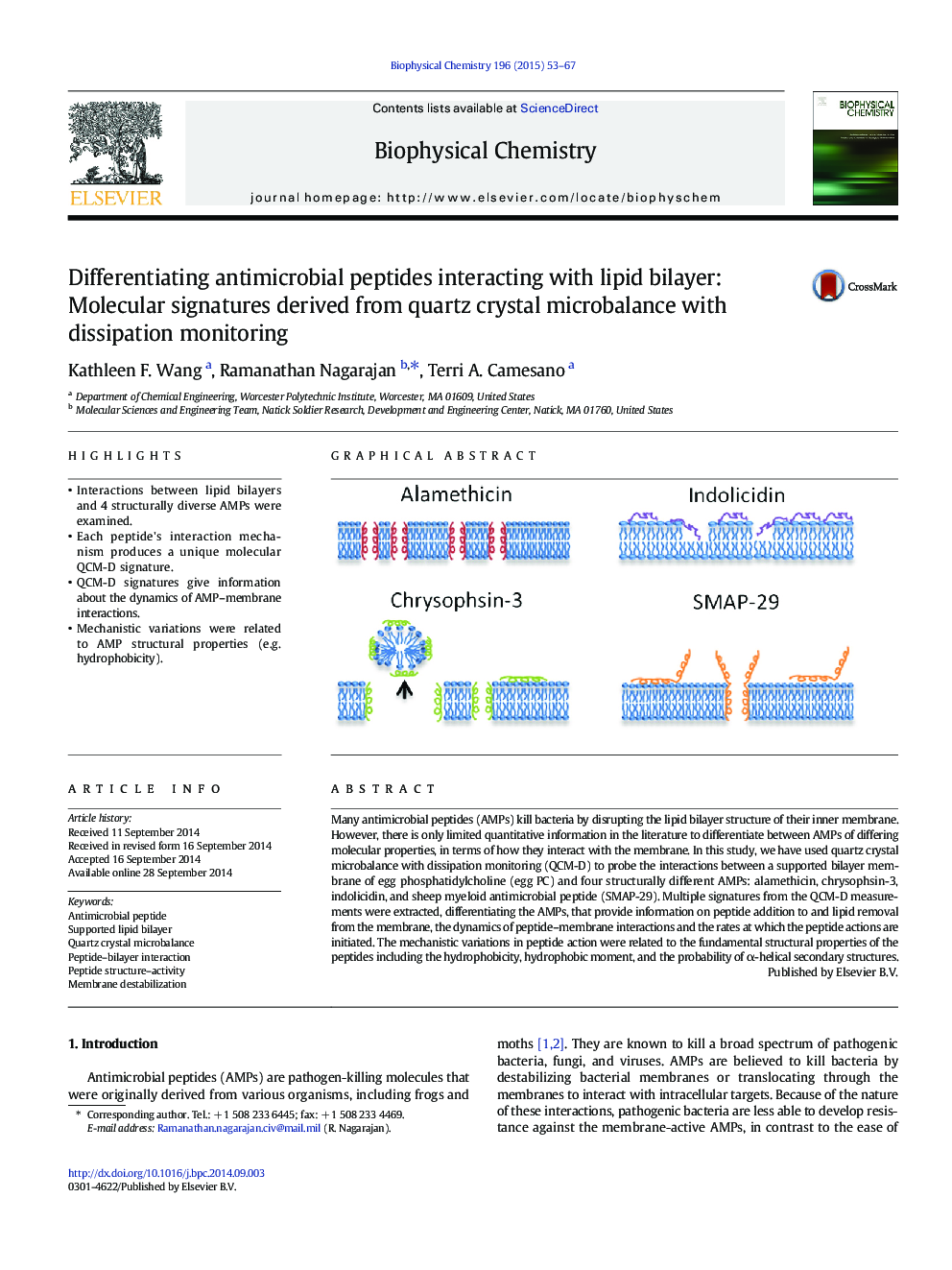| کد مقاله | کد نشریه | سال انتشار | مقاله انگلیسی | نسخه تمام متن |
|---|---|---|---|---|
| 5370895 | 1503921 | 2015 | 15 صفحه PDF | دانلود رایگان |
• Interactions between lipid bilayers and 4 structurally diverse AMPs were examined.
• Each peptide's interaction mechanism produces a unique molecular QCM-D signature.
• QCM-D signatures give information about the dynamics of AMP–membrane interactions.
• Mechanistic variations were related to AMP structural properties (e.g. hydrophobicity).
Many antimicrobial peptides (AMPs) kill bacteria by disrupting the lipid bilayer structure of their inner membrane. However, there is only limited quantitative information in the literature to differentiate between AMPs of differing molecular properties, in terms of how they interact with the membrane. In this study, we have used quartz crystal microbalance with dissipation monitoring (QCM-D) to probe the interactions between a supported bilayer membrane of egg phosphatidylcholine (egg PC) and four structurally different AMPs: alamethicin, chrysophsin-3, indolicidin, and sheep myeloid antimicrobial peptide (SMAP-29). Multiple signatures from the QCM-D measurements were extracted, differentiating the AMPs, that provide information on peptide addition to and lipid removal from the membrane, the dynamics of peptide–membrane interactions and the rates at which the peptide actions are initiated. The mechanistic variations in peptide action were related to the fundamental structural properties of the peptides including the hydrophobicity, hydrophobic moment, and the probability of α-helical secondary structures.
Figure optionsDownload as PowerPoint slide
Journal: Biophysical Chemistry - Volume 196, January 2015, Pages 53–67
